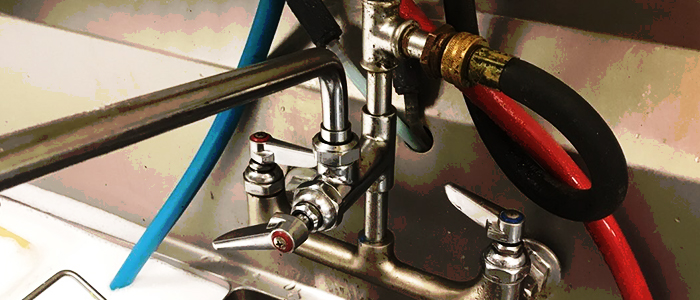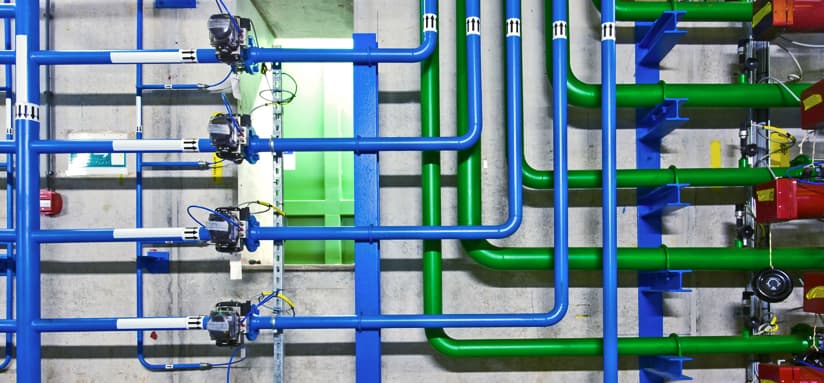The Main Elements of Your Home's Plumbing System
The Main Elements of Your Home's Plumbing System
Blog Article
In this article underneath you can get a good deal of superb details concerning Exploring Your Homes Plumbing Anatomy.

Recognizing just how your home's plumbing system functions is crucial for every property owner. From supplying clean water for drinking, cooking, and showering to securely removing wastewater, a well-kept pipes system is critical for your family's health and comfort. In this extensive guide, we'll check out the detailed network that makes up your home's plumbing and offer ideas on maintenance, upgrades, and managing typical concerns.
Intro
Your home's pipes system is greater than just a network of pipes; it's a complex system that ensures you have access to clean water and effective wastewater removal. Understanding its elements and exactly how they collaborate can aid you protect against costly repair work and make sure whatever runs efficiently.
Basic Parts of a Plumbing System
Pipes and Tubing
At the heart of your plumbing system are the pipes and tubes that bring water throughout your home. These can be constructed from numerous products such as copper, PVC, or PEX, each with its benefits in regards to resilience and cost-effectiveness.
Fixtures: Sinks, Toilets, Showers, etc.
Fixtures like sinks, bathrooms, showers, and tubs are where water is used in your home. Understanding just how these components attach to the pipes system aids in diagnosing troubles and planning upgrades.
Valves and Shut-off Points
Valves control the flow of water in your plumbing system. Shut-off shutoffs are crucial during emergencies or when you require to make fixings, permitting you to isolate parts of the system without interrupting water flow to the whole home.
Supply Of Water System
Main Water Line
The major water line links your home to the community water system or a private well. It's where water enters your home and is distributed to numerous fixtures.
Water Meter and Stress Regulator
The water meter actions your water usage, while a stress regulator makes certain that water flows at a secure pressure throughout your home's pipes system, avoiding damages to pipes and components.
Cold Water vs. Hot Water Lines
Recognizing the distinction between cold water lines, which provide water directly from the primary, and hot water lines, which bring warmed water from the hot water heater, helps in fixing and planning for upgrades.
Water drainage System
Drain Pipes Pipeline and Traps
Drain pipelines bring wastewater far from sinks, showers, and bathrooms to the sewage system or septic tank. Catches prevent drain gases from entering your home and also trap particles that might create blockages.
Ventilation Pipelines
Ventilation pipelines allow air right into the water drainage system, avoiding suction that can slow down water drainage and cause catches to vacant. Appropriate ventilation is necessary for maintaining the stability of your plumbing system.
Relevance of Proper Water Drainage
Ensuring proper drain protects against backups and water damages. Consistently cleaning drains and keeping traps can stop pricey repair work and prolong the life of your pipes system.
Water Heating System
Kinds Of Hot Water Heater
Hot water heater can be tankless or conventional tank-style. Tankless heaters warm water as needed, while tanks store warmed water for prompt usage.
How Water Heaters Link to the Pipes System
Recognizing just how hot water heater attach to both the cold water supply and hot water distribution lines aids in diagnosing concerns like insufficient hot water or leakages.
Upkeep Tips for Water Heaters
Routinely flushing your hot water heater to get rid of debris, checking the temperature setups, and evaluating for leaks can expand its lifespan and enhance power efficiency.
Common Plumbing Problems
Leakages and Their Reasons
Leakages can take place due to aging pipelines, loosened fittings, or high water stress. Attending to leakages without delay protects against water damages and mold and mildew growth.
Blockages and Obstructions
Blockages in drains pipes and bathrooms are commonly triggered by flushing non-flushable items or a buildup of grease and hair. Using drain screens and being mindful of what goes down your drains can prevent obstructions.
Indicators of Pipes Troubles to Expect
Low tide stress, sluggish drains, foul odors, or uncommonly high water expenses are signs of potential plumbing troubles that need to be resolved without delay.
Plumbing Maintenance Tips
Regular Inspections and Checks
Set up yearly pipes evaluations to catch issues early. Seek indicators of leakages, rust, or mineral buildup in taps and showerheads.
DIY Maintenance Tasks
Basic jobs like cleaning faucet aerators, checking for toilet leaks using dye tablets, or insulating revealed pipelines in cool environments can protect against significant pipes problems.
When to Call an Expert Plumbing Technician
Know when a pipes problem needs expert competence. Trying complicated repair work without proper understanding can result in even more damages and higher fixing expenses.
Upgrading Your Pipes System
Reasons for Updating
Updating to water-efficient fixtures or changing old pipes can boost water quality, lower water costs, and boost the value of your home.
Modern Plumbing Technologies and Their Advantages
Discover innovations like clever leak detectors, water-saving toilets, and energy-efficient hot water heater that can save cash and reduce ecological impact.
Price Considerations and ROI
Compute the upfront prices versus long-term financial savings when thinking about plumbing upgrades. Lots of upgrades pay for themselves with minimized utility costs and fewer repairs.
Ecological Effect and Preservation
Water-Saving Components and Home Appliances
Setting up low-flow faucets, showerheads, and bathrooms can significantly minimize water usage without giving up performance.
Tips for Minimizing Water Usage
Straightforward habits like taking care of leakages promptly, taking much shorter showers, and running complete loads of washing and recipes can save water and reduced your energy bills.
Eco-Friendly Pipes Options
Consider sustainable pipes products like bamboo for floor covering, which is durable and environmentally friendly, or recycled glass for countertops.
Emergency Readiness
Actions to Take During a Plumbing Emergency situation
Know where your shut-off shutoffs are located and how to shut off the water supply in case of a burst pipeline or major leakage.
Importance of Having Emergency Get In Touches With Helpful
Maintain contact info for regional plumbing professionals or emergency services easily offered for fast response during a plumbing dilemma.
DIY Emergency Fixes (When Appropriate).
Momentary repairs like making use of air duct tape to spot a leaking pipe or placing a container under a leaking tap can reduce damages till a professional plumber arrives.
Final thought.
Recognizing the anatomy of your home's plumbing system empowers you to preserve it efficiently, conserving money and time on repair services. By adhering to normal upkeep regimens and staying informed about modern plumbing technologies, you can ensure your plumbing system operates efficiently for years to come.
HOW YOUR PLUMBING SYSTEM WORKS
Which Pipes Do What?
Blue lines = fresh water supply entering the building
Red lines = hot water supply entering the building
Grey lines = pipes carrying waste away from the building and venting pipes carrying gases away from the building (through the roof)
YOUR MAIN PLUMBING SYSTEMS
There are two main plumbing systems that support your home s basic plumbing needs one that brings clean water into your home, and one that sends dirty water away from your home. Connected to the toilet, bath, shower, and other faucets in your home, these two systems keep your water flowing in the right directions.
ACCESSING FRESH WATER
Fresh and clean water is brought into your home through the main water supply line . Filtered through one pipe, this water is pressured to flow into the various fixtures in your home at any given time.
This water can be sourced from a well located on your property, a pond or river (mostly cottages), or, as in most cases, from the city s municipal water treatment centre. However, it is important to note that water that is untreated, such as the water siphoned from ponds or rivers, may not be safe to drink. Personal water supplies always need to be treated for hardness and contaminants before consumed.
MUNICIPAL WATER SUPPLIES
Improve taste and odour
Remove sediment
Eliminate hardness
Reduce chlorine
COLD WATER SUPPLY VS. HOT WATER SUPPLY
Cold water flows into your home or building through the service line, which then distributes hot or cold water to your fixtures. This line is most commonly run through a central column that runs floor to floor. Hot water runs in short and straight pipes as the longer the pipeline, the more heat that will be lost in the transfer. Having shorter pipes also allows residents to access hot water more quickly.
WASTE WATER SYSTEM
Your wastewater system is divided into two parts pipes that send wastewater away from your home and venting pipes that send sewer gas away from your home. Sewage water travels through pipes that flush the water and waste towards local sewers that are operated and managed by your city or town. Most sewer systems rely on gravity to move the wastewater to where it needs to go.
The further away from your toilet or sink, the larger wastewater pipes become. This allows for waste to be disposed of from various parts of your home or business at once without pipe blockages. The angle and flow of these pipes are also essential for keeping your waste pipes clear of build up.
https://harrisplumbing.ca/how-your-home-plumbing-system-works/

HOW YOUR PLUMBING SYSTEM WORKS
Which Pipes Do What?
YOUR MAIN PLUMBING SYSTEMS
There are two main plumbing systems that support your home s basic plumbing needs one that brings clean water into your home, and one that sends dirty water away from your home. Connected to the toilet, bath, shower, and other faucets in your home, these two systems keep your water flowing in the right directions.
ACCESSING FRESH WATER
Fresh and clean water is brought into your home through the main water supply line . Filtered through one pipe, this water is pressured to flow into the various fixtures in your home at any given time.
This water can be sourced from a well located on your property, a pond or river (mostly cottages), or, as in most cases, from the city s municipal water treatment centre. However, it is important to note that water that is untreated, such as the water siphoned from ponds or rivers, may not be safe to drink. Personal water supplies always need to be treated for hardness and contaminants before consumed.
MUNICIPAL WATER SUPPLIES
COLD WATER SUPPLY VS. HOT WATER SUPPLY
Cold water flows into your home or building through the service line, which then distributes hot or cold water to your fixtures. This line is most commonly run through a central column that runs floor to floor. Hot water runs in short and straight pipes as the longer the pipeline, the more heat that will be lost in the transfer. Having shorter pipes also allows residents to access hot water more quickly.
WASTE WATER SYSTEM
Your wastewater system is divided into two parts pipes that send wastewater away from your home and venting pipes that send sewer gas away from your home. Sewage water travels through pipes that flush the water and waste towards local sewers that are operated and managed by your city or town. Most sewer systems rely on gravity to move the wastewater to where it needs to go.
The further away from your toilet or sink, the larger wastewater pipes become. This allows for waste to be disposed of from various parts of your home or business at once without pipe blockages. The angle and flow of these pipes are also essential for keeping your waste pipes clear of build up.
https://harrisplumbing.ca/how-your-home-plumbing-system-works/
As a fervent reader on Understanding Your Home's Plumbing Anatomy, I thought sharing that topic was a good thing. Sharing is good. Helping others is fun. I recognize the value of reading our article about .
Schedule Appointment Report this page